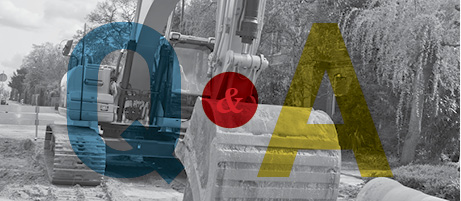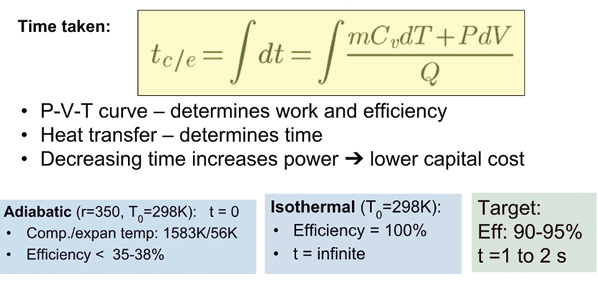Can You Dig It?

High-productivity Mine Invests in Hydraulic Drives
By Ashok Amin, Hägglunds, Market Segment Manager, Bosch Rexroth
The air is filled with dust, and the large, heavy rocks pound the equipment hard. Only the toughest survive at the Aitik mine. Boliden therefore takes great care in selecting suppliers for its new crushing plant.
“We make sure we only use suppliers that have experience in this field. This applies to all the investments we have made in recent years, but this project has given us the best results so far,” says Jörgen Larsson, Project Manager at Boliden.
Visitors to Sweden’s biggest open-pit copper mine are greeted with an impressive sight in Gällivare. The entire Empire State Building could stand on the floor of the mine without reaching above its rim. Way below, some of the largest machines in the world are crawling about: excavators with a bucket capacity of 45 cubic meters and rock trucks capable of carrying more than 300 tons, with wheels that are a full four meters in diameter.
The ore deposits in Aitik contain a copper ore called chalcopyrite, as well as some gold and silver. The ore is refined to produce a concentrate that feeds Boliden’s own smelting works. The rock waste, or overburden, is removed from the pit and sold for road-building and concrete production, for example.
Aitik is not only the largest open-pit copper mine in Sweden, but also the most productive in the world. This is thanks to large-scale production, highly efficient methods, and a high degree of automation.
“We can process more low-grade ore than many other mines because of our efficiency. We actually have lower input levels than many other mines have in waste,” says Larsson.
Strategic Investments for Growth
The Aitik mine has set a long-term goal to raise production from 36 to 45 million tons of crushed ore by 2020. To achieve this growth and improve the consistency and reliability of production at the same time, Boliden has invested in a completely new crushing plant with two spindle crushers. In its annual report, the company states that this massive investment will ensure “more reliable production planning, lower maintenance costs, better predictability and better profits.”
“Right now we are getting a good price for what we produce. That gives us the opportunity to invest. But one big challenge is that we are greatly increasing the area of mining, which also involves high costs. We constantly have to fine-tune our mining operations so that we can increase production using our existing equipment. The new crushing plant will enable us to do that,” says Larsson.
Obtaining the permit to expand also placed big demands on the ecological sustainability of the Aitik mine.
“We are leading the way environmentally. This will allow us to ramp up production. The measures we have taken range from electric vehicles to energy recovery and ecological compensation areas,” shares Larsson, who stresses that the company is constantly raising its commitment to the environment.”
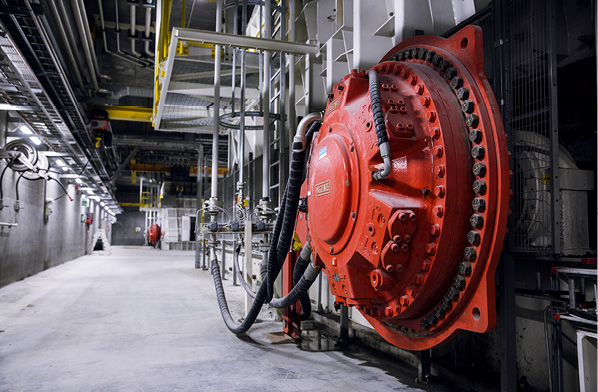
A Plant to be Proud of
Larsson has a great deal of experience in the industry. He has done everything from operating mining machinery to supervising maintenance and installation. He has supervised the crushing project and been involved in commissioning.
“It’s fantastic that we have been able to invest in a totally new plant, where everything is well-planned and we have plenty of access to the equipment.”
Larsson is especially pleased with the completely new feed system.
“We originally had inclined apron feeders. They were unreliable in every way. These are the first conveyors that are completely horizontal. And they look great!”
The feed system was designed by Metso in the U.S., and is a proven design with many systems already in use around the world. Metso Minerals adapted the system to suit the particular needs of the Aitik mine. This work was done in close collaboration with Bosch Rexroth, which supplied four CBM hydraulic Hägglunds motors.
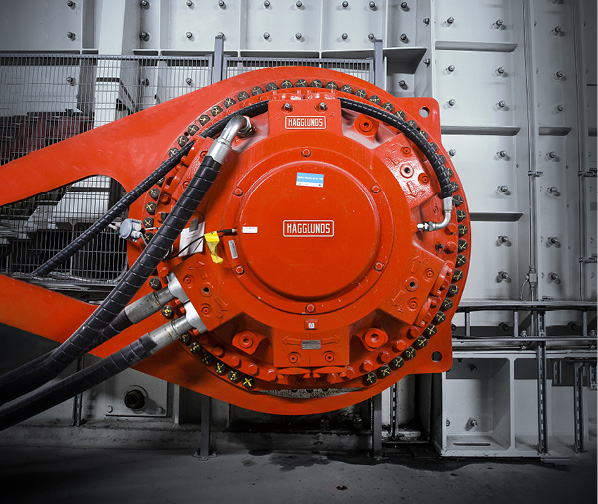
Curious about Hydraulic Drive
One of the reasons why Boliden decided to invest in apron feeders with direct hydraulic drive was frequent problems with gearboxes. Another was curiosity.
“We had many gearbox breakdowns over the years and wanted to improve availability. This will be a test of hydraulic technology. I have seen Hägglunds drives in various reference installations around the world, and during my investigations, I did not hear of any negative experiences. My visit to the factory in Mellansel was also incredibly interesting. I gained a new understanding of how hydraulic systems work.”
In addition to improved availability, Boliden set high demands on the performance of the equipment. Then, Metso drew up a specification of requirements based on two motors that share the load on each feed unit, with a capacity of 8,000 tons per hour, a variable speed of 0–7.46 rpm and a starting torque of around 1,000,000 Nm.
The solution offered by the Hägglunds specialists at Bosch Rexroth was two CBM 2000–1400 motors per apron feeder. It was a welcome solution that easily met the requirements.
“We wanted to have some power in reserve, so that’s good. It gives us a maximum capacity of 9,000 tons per hour. It also gives us redundancy for all the main components, so we can drive with one motor if needed,” explains Larsson.
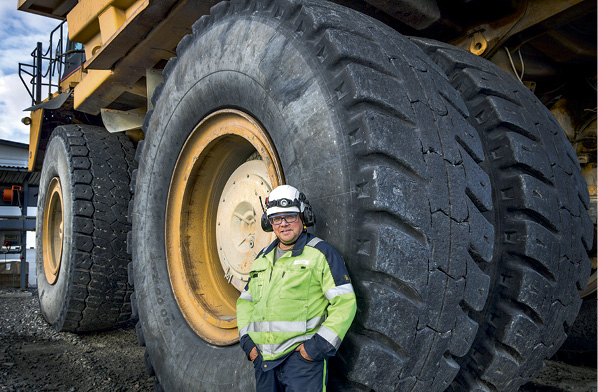
Success Factors for the Project
The new plant was commissioned in June and the Aitik mine is now running at full production capacity.
“After a few weeks of testing, we went on summer vacation. I was away for five weeks and everything worked perfectly! The plant has now processed more than six million tons of ore and there has not been a single incident. The fact that production is running so smoothly at this early stage is an excellent result. Especially when the plant was custom-built specifically for our needs.”
The drive systems take up minimal space and allow fast replacement of components, thanks to the splined couplings. Larsson reckons they make installation incredibly easy.
“The main benefits are that we have improved availability while reducing maintenance costs. The hydraulic drives provide better access from the sides and make the plant easier to maintain. The way things are looking now, we won’t need to work on them, but if we do have to replace anything we have really good access. Another big advantage is that we can reverse the hydraulic drives during maintenance.”
All that remains to do now is a few small adjustments and performance tests. Boliden will take both crushers and drive systems up to maximum load and check that they produce the tonnage required. A big part of the performance testing is to ensure that the plant can meet availability targets over the course of a month.
“It all looks good so far. If this turns out well and gives us improved reliability, we will probably use hydraulic drive technology elsewhere. For our big conveyor systems in particular, the Hägglunds drives are definite contenders,” says Larsson with satisfaction.


